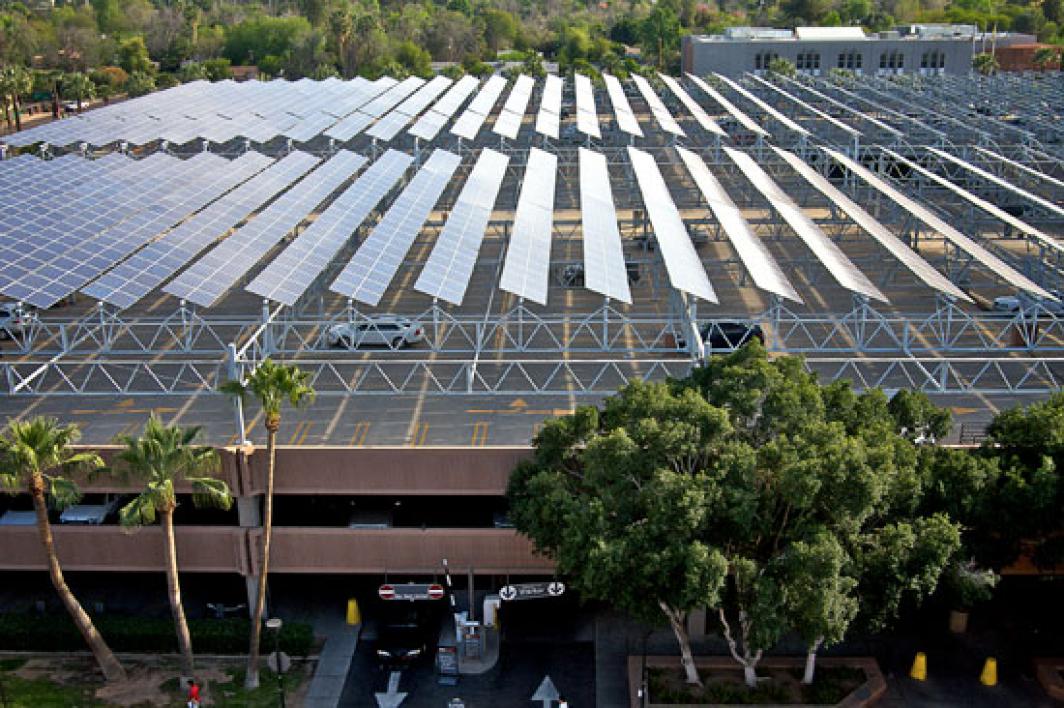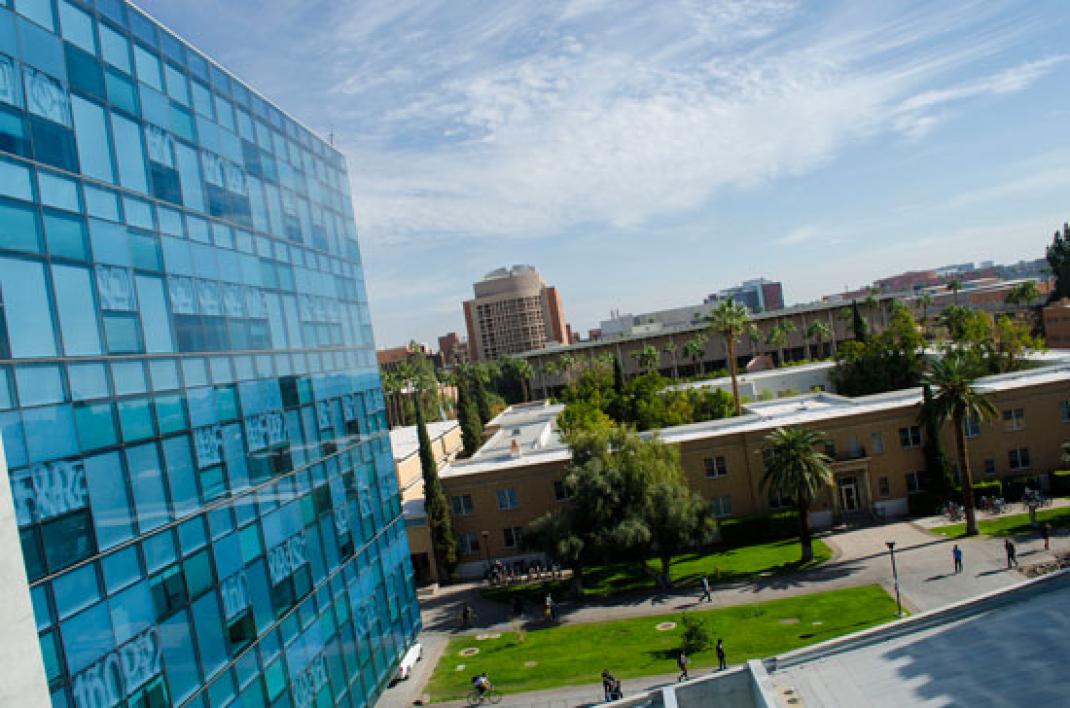What we achieved in 2013

A year of advancement
2013 was our time to climb – in rankings, research advances, health initiatives, global partnerships, and university-wide contributions among faculty, staff and students. So, what exactly did we do in 2013? It would appear that we did a lot.

Our students broke records.
We became the third-highest producer of Fulbright scholars, tied with Princeton and Rutgers, as a record number of Sun Devils studied and taught abroad. ASU has the highest winning percentage of almost any school in the nation, with 43 percent of Fulbright applicants achieving success. But that's not all. ASU welcomed its most diverse, academically distinguished freshman class ever, and was recognized for its ability to embrace a broad spectrum of students. Not to be outdone, Sun Devil student-athletes surpassed a monumental milestone of their own, when they recorded their highest GPA in history.

We climbed in rankings.
Named one of the greenest schools in the United States, we were recognized for boasting the largest collection of energy-producing solar panels of any public university. In 2013 ASU was the only Pac-12 school listed by U.S. News & World Report as one of the best schools in the nation to earn an online degree. And, once again, ASU was ranked among the world's top 100 universities for being the most globally advanced "in terms of merging boundaries between academic disciplines" and being "focused upon intellectual fusion around major international challenges."

We addressed obesity.
ASU confronted this growing worldwide health challenge by partnering with the Mayo Clinic on an ambitious undertaking: the Obesity Solutions Initiative. The broad university-wide effort includes the work of Alexandra Brewis Slade, a pioneer of obesity studies. To help combat the alarming prediction that half of all Latino youth born in the year 2000 will develop Type 2 diabetes, ASU's Southwest Interdisciplinary Research Center offered a community-based diabetes prevention program for Latino adolescents. And ASU startup Breezing offered the world’s first portable device that can track an individual’s metabolism and use that information to provide diet and exercise recommendations for maintaining or reaching a healthy weight.

We made technology better.
2013 was the year in which researchers with the Flexible Electronics and Display Center at ASU successfully manufactured the world's largest flexible color organic light emitting display prototype. On the sustainability front, ASU researchers began developing new ultra-thin silicon solar cells designed to increase the amount of electricity that can be produced through direct conversion of sunlight. On the biomedical front, ASU's Biodesign Institute advanced the development of a medical device that will rapidly assess a person's exposure to radiation in the event of a nuclear accident.

We partnered for global change.
Faculty in Mary Lou Fulton Teachers College helped pave the way to a better education for India’s burgeoning population of school-aged children. And in North America and Ireland, ASU and Dublin City University worked to advance education and research, based on their shared values of innovation and entrepreneurship, technology-enhanced learning and research and discovery. As part of a global cause to bolster solar power technologies, solve sustainability problems and encourage smart growth, ASU researchers joined forces with experts and leaders from Australia, the Netherlands and Vietnam.

We brought in some new players.
ASU met 2013 with a new outreach center in Southern California, in addition to a new state-of-the-art building for its internationally renowned W. P. Carey School of Business. The university added new routes for students to enter teaching careers, while also appointing a new provost.

We learned more about the world we live in.
For example, discovering that ants, when faced with decision-making, are apt to change their priorities, much in the way that humans do. We helped determine that Mars once was capable of supporting life, and what it means today for our military to return home from war. While the cure for cancer remains at large, ASU scientists made a big step forward in identifying a key link responsible for the onset of colon cancer. Not to be outdone, ASU's top 10 species list turned 100. Well, 100 species that is. The popular list that highlights amazing species discoveries now shares the most beloved 100 new species of the past decade.

We planted seeds for success.
Achieving climate neutrality at ASU by 2025 is in the works, thanks to a new partnership. Reaching higher rates of effective teaching in high-need K-12 classrooms across Arizona is also in the works, due to the ASU-administered Education Teacher Incentive Fund grant. In coordination with other universities, ASU researchers are expected to transform the field of structural and dynamic molecular biology, including drug development, with the 2013 establishment of a new Science and Technology Center, sponsored by the National Science Foundation.

We won the Pac-12 South.
The Arizona State Sun Devils not only won the Pac-12 South Championship, they managed to defend the Territorial Cup. Under the helm of head football coach Todd Graham, ASU finished the regular season with a 10-3 record – allowing the team entrance into a bowl game. Take a look at ASU's road to the Holiday Bowl.

